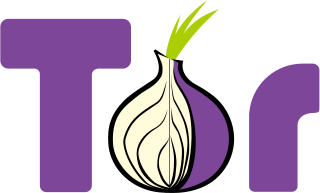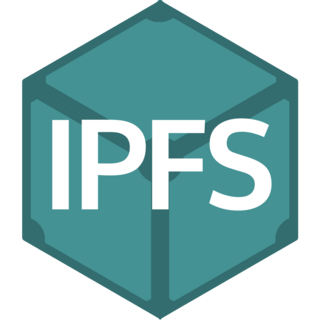
Peer-to-peer (P2P) computing or networking is a distributed application architecture that partitions tasks or workloads between peers. Peers are equally privileged, equipotent participants in the network. They are said to form a peer-to-peer network of nodes.
Grid computing is the use of widely distributed computer resources to reach a common goal. A computing grid can be thought of as a distributed system with non-interactive workloads that involve many files. Grid computing is distinguished from conventional high-performance computing systems such as cluster computing in that grid computers have each node set to perform a different task/application. Grid computers also tend to be more heterogeneous and geographically dispersed than cluster computers. Although a single grid can be dedicated to a particular application, commonly a grid is used for a variety of purposes. Grids are often constructed with general-purpose grid middleware software libraries. Grid sizes can be quite large.
DECnet is a suite of network protocols created by Digital Equipment Corporation. Originally released in 1975 in order to connect two PDP-11 minicomputers, it evolved into one of the first peer-to-peer network architectures, thus transforming DEC into a networking powerhouse in the 1980s. Initially built with three layers, it later (1982) evolved into a seven-layer OSI-compliant networking protocol.

A distributed hash table (DHT) is a distributed system that provides a lookup service similar to a hash table: key–value pairs are stored in a DHT, and any participating node can efficiently retrieve the value associated with a given key. The main advantage of a DHT is that nodes can be added or removed with minimum work around re-distributing keys. Keys are unique identifiers which map to particular values, which in turn can be anything from addresses, to documents, to arbitrary data. Responsibility for maintaining the mapping from keys to values is distributed among the nodes, in such a way that a change in the set of participants causes a minimal amount of disruption. This allows a DHT to scale to extremely large numbers of nodes and to handle continual node arrivals, departures, and failures.
BitTorrent is a communication protocol for peer-to-peer file sharing (P2P), which enables users to distribute data and electronic files over the Internet in a decentralized manner.

GNUnet is a software framework for decentralized, peer-to-peer networking and an official GNU package. The framework offers link encryption, peer discovery, resource allocation, communication over many transports and various basic peer-to-peer algorithms for routing, multicast and network size estimation.

The Department of Computer Science and Technology, formerly the Computer Laboratory, is the computer science department of the University of Cambridge. As of 2007 it employed 35 academic staff, 25 support staff, 35 affiliated research staff, and about 155 research students. The current Head of Department is Professor Ann Copestake.
Kademlia is a distributed hash table for decentralized peer-to-peer computer networks designed by Petar Maymounkov and David Mazières in 2002. It specifies the structure of the network and the exchange of information through node lookups. Kademlia nodes communicate among themselves using UDP. A virtual or overlay network is formed by the participant nodes. Each node is identified by a number or node ID. The node ID serves not only as identification, but the Kademlia algorithm uses the node ID to locate values. In fact, the node ID provides a direct map to file hashes and that node stores information on where to obtain the file or resource.

A wireless mesh network (WMN) is a communications network made up of radio nodes organized in a mesh topology. It can also be a form of wireless ad hoc network.
An overlay network is a computer network that is layered on top of another network.
In computer network research, network simulation is a technique whereby a software program replicates the behavior of a real network. This is achieved by calculating the interactions between the different network entities such as routers, switches, nodes, access points, links, etc. Most simulators use discrete event simulation in which the modeling of systems in which state variables change at discrete points in time. The behavior of the network and the various applications and services it supports can then be observed in a test lab; various attributes of the environment can also be modified in a controlled manner to assess how the network/protocols would behave under different conditions.
Peer exchange or PEX is a communications protocol that augments the BitTorrent file sharing protocol. It allows a group of users that are collaborating to share a given file to do so more swiftly and efficiently.

Perfect Dark (パーフェクトダーク) is a peer-to-peer file-sharing (P2P) application from Japan designed for use with Microsoft Windows. It was launched in 2006. Its author is known by the pseudonym Kaichō. Perfect Dark was developed with the intention for it to be the successor to both Winny and Share software. While Japan's Association for Copyright of Computer Software reported that in January 2014, the number of nodes connected on Perfect Dark was less than on Share, but more than on Winny, Netagent in 2018 reported Winny being the largest with 50 000 nodes followed by Perfect Dark with 30 000 nodes followed by Share with 10 000. Netagent asserts that the number of nodes on Perfect Dark have fallen since 2015 while the numbers of Winny hold steady. Netagent reports that users of Perfect Dark are most likely to share books/manga.

United International University (UIU) is a private university in Dhaka, Bangladesh.

Tor, short for The Onion Router, is free and open-source software for enabling anonymous communication. It directs Internet traffic through a free, worldwide, volunteer overlay network, consisting of more than seven thousand relays, to conceal a user's location and usage from anyone performing network surveillance or traffic analysis. Using Tor makes it more difficult to trace a user's Internet activity. Tor's intended use is to protect the personal privacy of its users, as well as their freedom and ability to communicate confidentially through IP address anonymity using Tor exit nodes.
In the BitTorrent file distribution system, a torrent file or meta-info file is a computer file that contains metadata about files and folders to be distributed, and usually also a list of the network locations of trackers, which are computers that help participants in the system find each other and form efficient distribution groups called swarms. A torrent file does not contain the content to be distributed; it only contains information about those files, such as their names, folder structure, and sizes obtained via cryptographic hash values for verifying file integrity. The term torrent may refer either to the metadata file or to the files downloaded, depending on the context.

Marta Zofia Kwiatkowska is a Polish theoretical computer scientist based in the United Kingdom.
T-Labs, formerly known as "Telekom Innovation Laboratories", is the R&D unit of Deutsche Telekom. T-Labs current research areas are: Future Networks, Spatial Computing and Decentralized Systems.
Ninux.org is a wireless community network in Italy, a free, open and experimental computer network. The main idea is that users build their own computer network without central control or property, as opposed to traditional Internet service providers (ISP), where a single entity owns and manages the network. The initiative is based on the Ninux manifesto, the Wireless Commons Manifesto and the Picopeering Agreement. In these agreements participants agree upon a network that is free from discrimination, in the sense of net neutrality.

The InterPlanetary File System (IPFS) is a protocol, hypermedia and file sharing peer-to-peer network for storing and sharing data in a distributed file system. IPFS uses content-addressing to uniquely identify each file in a global namespace connecting IPFS hosts.









